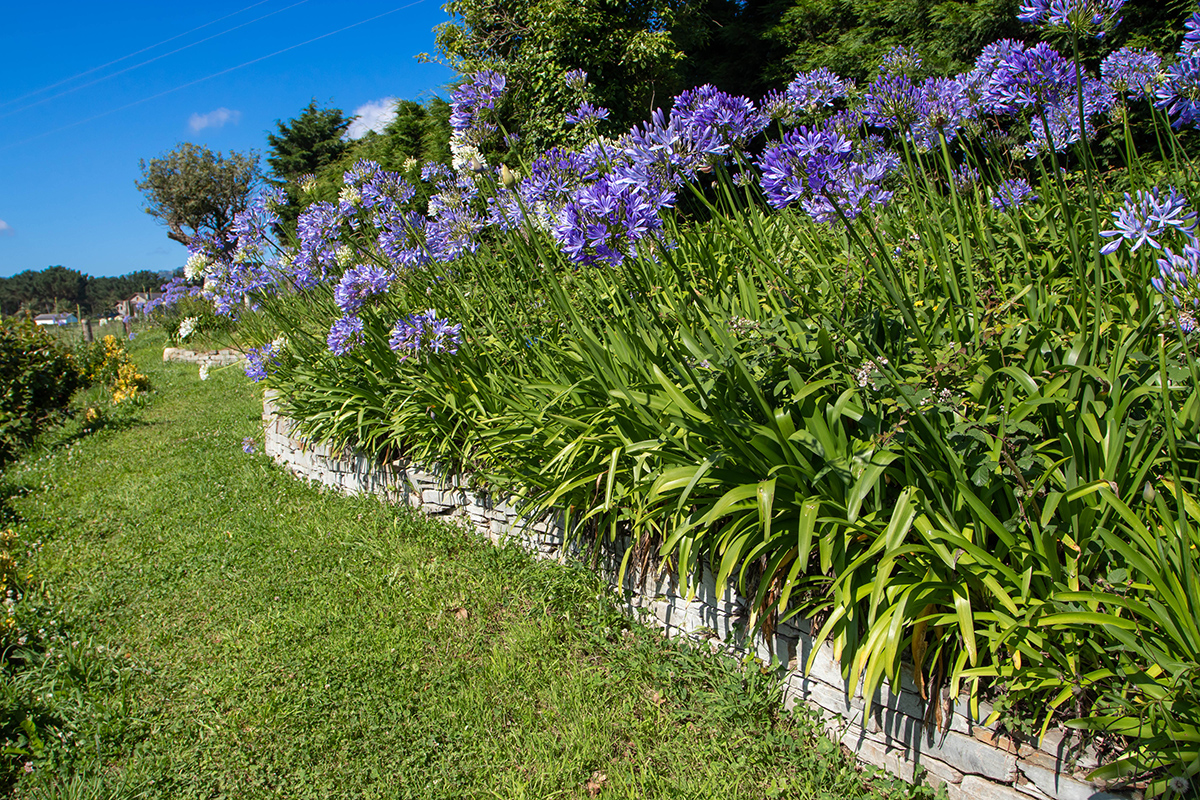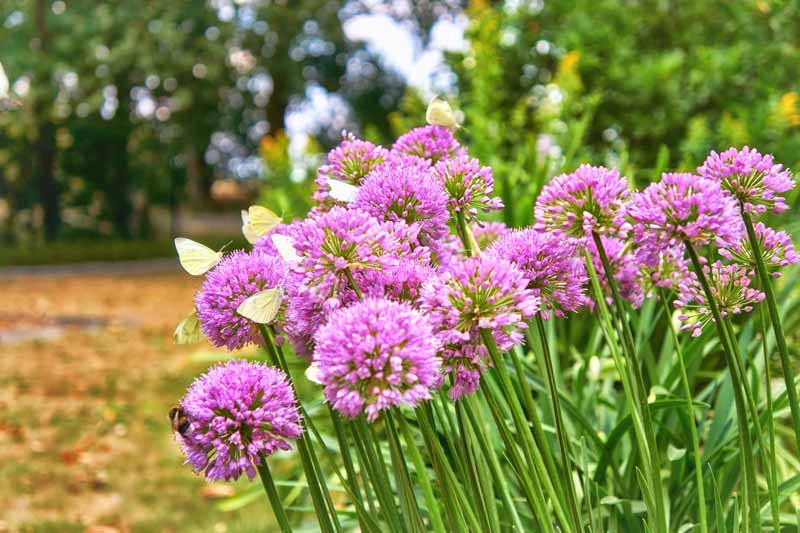Unleashing the Secret to Effective Agapanthus Cultivation: Advice for a Flourishing Garden
In the realm of gardening, cultivating agapanthus successfully needs a calculated strategy that encompasses different elements of plant treatment. By comprehending the subtleties of agapanthus farming, one can develop an environment where these plants grow and bloom perfectly.
Growing Agapanthus: Ideal Practices
When growing Agapanthus, proper soil preparation is essential for ensuring effective growth and growth of these lovely flowers. Agapanthus, generally referred to as Lily of the Nile or African lily, grows in well-draining soil with a somewhat acidic to neutral pH level - Agapanthus. Prior to growing, it is essential to amend hefty clay dirts with organic matter such as garden compost or peat moss to boost water drainage and provide vital nutrients for the plants
To plant Agapanthus, pick a location that gets complete sunlight to partial shade, as this will certainly promote healthy and balanced growth and bountiful flowering. Dig a hole twice the diameter of the plant's root ball and put the Agapanthus at the very same deepness it was previously expanding. Carefully backfill the hole with dirt, weighing down firmly to get rid of any type of air pockets around the roots.
Water the newly planted Agapanthus thoroughly and continue to maintain the dirt evenly moist, particularly throughout the plant's energetic expanding season. Agapanthus. Applying a balanced plant food once a month can better sustain the plant's growth and flowering. By complying with these best techniques for growing Agapanthus, you can develop a spectacular screen of these exciting blossoms in your garden
Suitable Dirt Issues for Agapanthus
For ideal growth and growing success of Agapanthus plants, ensuring the soil problems are excellent is critical. Agapanthus chooses dirt that is abundant in nutrients, so incorporating a balanced fertilizer during the growing season can advertise healthy and balanced growth and vibrant blossoms.

Watering and Fertilizing Tips
To make sure healthy growth and dynamic blossoms, correct watering and fertilizing methods are essential for effective Agapanthus growing. Agapanthus plants take advantage of normal watering, specifically throughout the growing season. It is advised to water deeply when a week, ensuring the soil is damp yet not saturated. Throughout heat or in pots, more constant watering might be required to stop the dirt from drying out completely.
When it concerns feeding Agapanthus, a balanced plant food with equal parts nitrogen, phosphorus, and potassium can be used in the springtime to promote healthy and balanced growth and flowering. Slow-release plant foods are suitable for supplying nutrients official website gradually over an extensive duration. Avoid over-fertilizing, as this can bring about excessive vegetation growth at the expenditure of flowers.
Additionally, integrating organic matter like garden compost right into the soil can boost nutrient levels and enhance soil structure, aiding in the general health and wellness of the Agapanthus plants. By following these watering and feeding tips, garden enthusiasts can ensure their Agapanthus plants grow and create stunning screens of flowers.
Trimming and Deadheading Techniques
Correct trimming and deadheading techniques play an important duty in preserving the wellness and looks of Agapanthus plants, complementing the crucial practices of watering and feeding for effective cultivation. Pruning Agapanthus entails removing spent blossom heads, yellowing or dead fallen leaves, and total shaping of the plant to advertise better growth. Deadheading, the procedure of getting rid of faded flowers, not just boosts the plant's appearance however additionally encourages additional growing.
When deadheading Agapanthus, it is advisable to clip off the blossom stem at the base making use of sharp, clean shears. This procedure reroutes the plant's power from seed manufacturing back find here right into origin and foliage growth, promoting a healthier and much more robust plant. Routine deadheading can expand the growing period of Agapanthus and avoid self-seeding, which can cause congestion.
In terms of trimming, Agapanthus usually gain from a light trim after blooming to clean the plant and urge fresh development. Reducing back the invested blossom stems and removing any dead or damaged vegetation aids preserve the plant's vigor and overall look. However, it is necessary to prevent cutting into the crown of the plant, as this can weaken its health.

Protecting Agapanthus From Vermins and Diseases
Executing effective bug and disease monitoring techniques is crucial to securing the health and wellness and vigor of Agapanthus plants in cultivation. One common insect that affects Agapanthus is the Agapanthus borer, a caterpillar that tunnels into the plant, triggering damages to the flowers and leaves.
Along with pests, Agapanthus are prone to illness such as origin rot and fungal fallen leave places. These concerns can typically be prevented by ensuring proper drain and staying clear of overwatering. Affected parts of the plant need to be promptly gotten rid of to protect against further spread if indicators of disease appear. Fungicides may also be utilized as a treatment procedure, following the supplier's directions thoroughly. By staying cautious and resolving parasite and disease issues quickly, gardeners can help their Agapanthus flourish and thrive.

Conclusion
To conclude, successful growing of agapanthus calls for appropriate planting strategies, optimal soil conditions, sufficient watering and feeding, regular pruning and deadheading, and security from pests and illness. By adhering to these suggestions and methods, gardeners can make certain a growing garden filled up with attractive agapanthus blooms. Agapanthus. Bear in mind to keep consistent care and focus to detail to promote the wellness and long life of these sensational plants
When growing Agapanthus, proper soil prep work is crucial for ensuring successful growth and development of these stunning blossoms.Water the recently planted Agapanthus thoroughly and continue to keep the soil evenly moist, especially during the plant's active growing season.For optimal growth and blooming success of Agapanthus plants, making certain the dirt problems are suitable view it now is crucial. When transplanting or planting Agapanthus, guarantee the dirt is well-prepared to supply the needed foundation for the plants to establish themselves successfully. One typical insect that affects Agapanthus is the Agapanthus borer, a caterpillar that passages right into the plant, creating damages to the leaves and blossoms.
 Edward Furlong Then & Now!
Edward Furlong Then & Now! Jake Lloyd Then & Now!
Jake Lloyd Then & Now! Michael Bower Then & Now!
Michael Bower Then & Now! Barbi Benton Then & Now!
Barbi Benton Then & Now! Meadow Walker Then & Now!
Meadow Walker Then & Now!